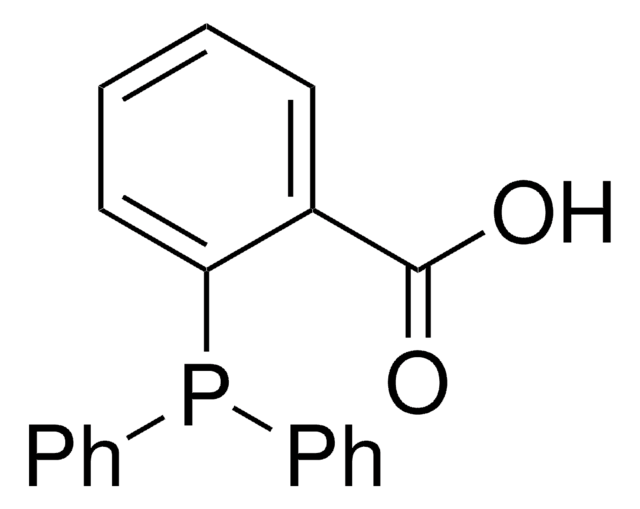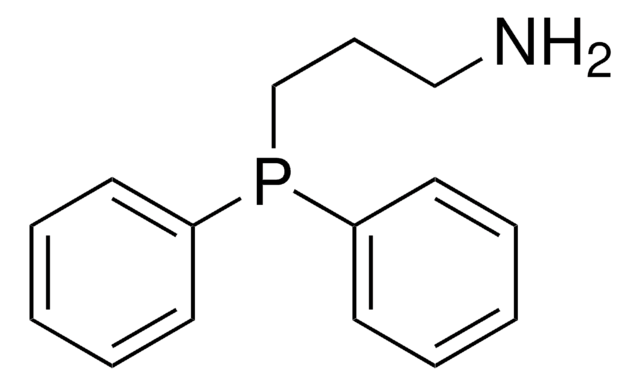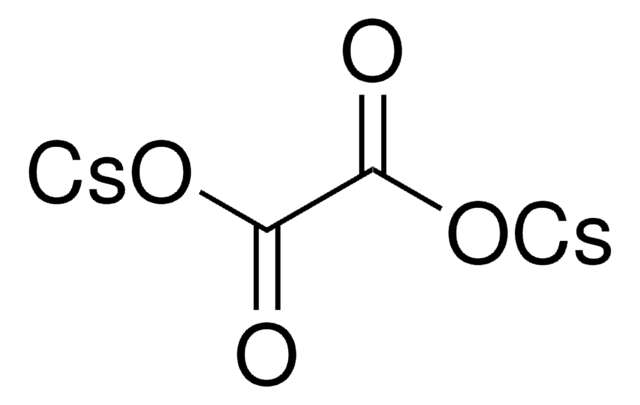401595
4-(Diphenylphosphino)benzoic acid
97%
Sinónimos:
(4-Carboxyphenyl)diphenylphosphine, Diphenyl(p-carboxyphenyl) phosphine, p-(Diphenylphosphino)benzoic acid
About This Item
Productos recomendados
Análisis
97%
idoneidad de la reacción
reaction type: Buchwald-Hartwig Cross Coupling Reaction
reaction type: Heck Reaction
reaction type: Hiyama Coupling
reaction type: Negishi Coupling
reaction type: Sonogashira Coupling
reaction type: Stille Coupling
reaction type: Suzuki-Miyaura Coupling
reagent type: ligand
mp
157-160 °C (lit.)
grupo funcional
phosphine
cadena SMILES
OC(=O)c1ccc(cc1)P(c2ccccc2)c3ccccc3
InChI
1S/C19H15O2P/c20-19(21)15-11-13-18(14-12-15)22(16-7-3-1-4-8-16)17-9-5-2-6-10-17/h1-14H,(H,20,21)
Clave InChI
GXMHDTPYKRTARV-UHFFFAOYSA-N
Descripción general
Aplicación
- Organostannoxane-supported palladium nanoparticles. The resulting catalysts show high activity and selectivity in Suzuki-coupling reactions.
- Polymetallic ruthenium-zinc complex catalyst for the hydrogenation of levulinic acid to γ-valerolactone.
Palabra de señalización
Warning
Frases de peligro
Consejos de prudencia
Clasificaciones de peligro
Eye Irrit. 2 - Skin Irrit. 2 - STOT SE 3
Órganos de actuación
Respiratory system
Código de clase de almacenamiento
11 - Combustible Solids
Clase de riesgo para el agua (WGK)
WGK 3
Equipo de protección personal
dust mask type N95 (US), Eyeshields, Gloves
Certificados de análisis (COA)
Busque Certificados de análisis (COA) introduciendo el número de lote del producto. Los números de lote se encuentran en la etiqueta del producto después de las palabras «Lot» o «Batch»
¿Ya tiene este producto?
Encuentre la documentación para los productos que ha comprado recientemente en la Biblioteca de documentos.
Los clientes también vieron
Nuestro equipo de científicos tiene experiencia en todas las áreas de investigación: Ciencias de la vida, Ciencia de los materiales, Síntesis química, Cromatografía, Analítica y muchas otras.
Póngase en contacto con el Servicio técnico











